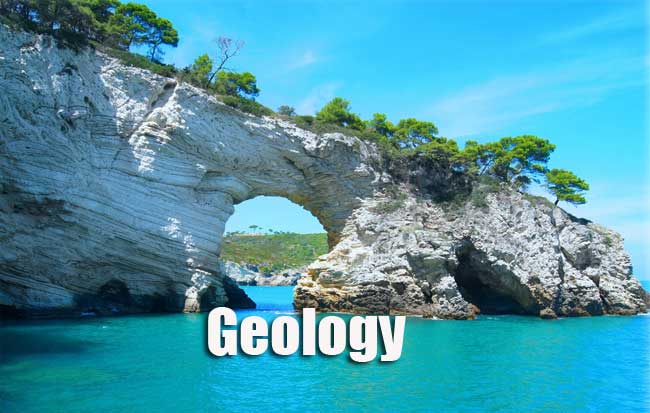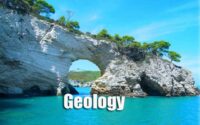Geology Practice Papers
In this Article, we have provided the Geology Practice Papers along with Solutions. So, the interested candidates who applied for jobs in Geology can download Geology Practice Papers for free of cost. Get all the Geology Practice Papers with just one click. Click on the enclosed links below to download the Geology Practice Papers.

Check the Last five years Geology Practice Papers to get a clear idea of the exam pattern. Along with Geology Practice Papers, it’s better to refer Geology Syllabus & Exam Pattern before starting preparation. So, click on link to check and download Geology Practice Papers PDF.
Practice Papers on Geology
1. __________ is mineralogically equivalent to granite.
(A) Aplite
(B) Gabbro
(C) Dolerite
(D) Syenite
2. ___ is the volcanic equivalent of granodiorite.
(A) Rhyolite
(B) Dacite
(C) Trachyte
(D) Phonolite
3. Graphic texture is a product of crystallization at
(A) tripple point
(B) incongruent point
(C) eutectic point
(D) quadrotectic point
4. Which of the following may not be of metamorphic origin?
(A) Granite
(B) Basalt
(C) Trachyte
(D) Gabbro
5. Ophitic texture is commonly exhibited by
(A) Lamprophyre
(B) Dolerite
(C) Harzburgite
(D) trachyte
6. Batholiths are always associated with
(A) earthquake zones
(B) orogenic belt
(C) island arc
(D) fold and faults
7. ___ texture is absent in plutonic igneous rocks.
(A) Holohyaline
(B) Holocrystalline
(C) Porphyritic
(D) Granitic
8. Conglomerate with compositionally one type of pebble is called
(A) polymictic conglomerate
(B) oligomictic conglomerate
(C) intraformational conglomerate
(D) interformational conglomerate
9. Pudding stone is a synonymous term for
(A) Breccia
(B) Grit
(C) Khondalite
(D) conglomerate
10. ___ is a light-coloured sandstone with at least 25% feldspar.
(A) Orthoquartite
(B) Arkose
(C) Greywacke
(D) Grit
11. Silt and clay deposits formed by the sediments carried in suspension by air currents is known as
(A) Marlite
(B) Novaculite
(C) Loess
(D) lacustrine
12. Find the argillaceous rock from the following :
(A) Sandstone
(B) Suiltstone
(C) Shale
(D) Grit
13. Find out the discordant bedding of the following :
(A) Current bedding
(B) Graded bedding
(C) Ripple marks
(D) Mud cracks
14. Rounded clasts, high SiO2 and Al2O3 high ZTR reflect
(A) high maturity
(B) low maturity
(C) tectonic unstability
(D) reducing conditions
15. Blastoporphyritic -means
(A) an inherited porphyritic fabric
(B) equigranular fabric
(C) a fabric that develops during metamorphism
(D) post-metamorphic fabric
16. Hornfelsic rocks form due to ____ metamorphism.
(A) Regional
(B) Contact
(C) Cataclastic
(D) pneumatolytic
17. Which of the following rocks was produced by dynamothermal metamorphism?
(A) Schist
(B) Marble
(C) Mylonite
(D) Slate
18. The general temperature of metamorphism is in between
(A) 400 °C to 1100 °C
(B) 500 °C to 1200 °C
(C) 100 °C to 3000 °C
(D) 200 °C to 800 °C
19. Regional metamorphism occurred due to ______ conditions.
(A) heat predominant
(B) directed pressure predominant
(C) uniform pressure and heat predominant
(D) directed pressure and heat predominant
20. The minerals glaucophane and jadeite are suggestive of
(A) high temperature—low pressure
(B) high pressure—low temperature
(C) high temperature-high pressure
(D) low pressure—low temperature
| Hydrogeology | Quiz |
| Practice Papers | Objective Papers |
| Mock Test | Sample Papers |
| GK | Model Questions |
| Important Questions | Previous Papers |
| MCQs |
21. Find the hydrothermal deposit from the following :
(A) Residual deposit
(B) Placer deposit
(C) Cavity-filling deposit
(D) Evaporites
22. Pyrolusite is an ore of
(A) Manganese
(B) Aluminium
(C) Iron
(D) copper
23. The zone of oxidation in the supergene sulphide enrichment process extends
(A) up to the water table
(B) up to 2°5 metres above water table
(C) just below water table
(D) up to the soil level
24. Ladder views are usually found in
(A) Sill
(B) Dyke
(C) lava flows
(D) volcanic pipes
25. Which one of the following is not a magmatic concentration deposit?
(A) Residual liquid deposit
(B) Immiscible liquid deposit
(C) Oxidized and supergene deposit
(D) Pegmatitic deposit
26. Asbestos is used for the production of
(A) insulator
(B) smelting material
(C) textile product
(D) alloy
27. According to Lindgren’s classification, a hydrothermal deposit which is formed at 300 °C to 500 °C and at very high pressure is
(A) Xenothermal
(B) telethermal
(C) mesothermal
(D) hypothermal
28. Which of the following deposits evolves due to sublimation?
(A) Chromite
(B) Magnetite
(C) Sulphur
(D) Diamond
29. The chemical composition of chromite is
(A) Cr2O3
(B) FeO-Cr2O3
(C) Cr2SO4
(D) FeO-CrO3
30. The coal deposit of Assam is economically found in
(A) Tipam Group
(B) Surma Group
(C) Dihing Group
(D) Barail Group
31. The largest resources of lignite in the country are located in
(A) Bhuj and Mehsana, Gujarat
(B) Palana and Baroner, Rajasthan
(C) Karewa Belt, Kashmir
(D) Neyveli, South Arcot, Tamil Nadu
32. Tertiary coals are containing ___ amount of ash than the Gondwana coal.
(A) Higher
(B) Equal
(C) Lower
(D) infinitely higher
33. The oldest oil field of Assam is
(A) Rudrasagar Oil Field
(B) Lakwa Oil Field
(C) Digboi Oil Field
(D) Naharkatiya Oil Field
34. Chromite is a member of the
(A) Spinel Group
(B) Epidote Group
(C) Olivine Group
(D) Mellilite Group
35. Copper deposit of Singhbhum is an example of
(A) fissure vein deposit
(B) shear zone deposit
(C) ladder vein deposit
(D) saddle reef deposit
36. The fundamental unit of lithostratigraphic classification is
(A) Supergroup
(B) Group
(C) formation
(D) member
37. The basic unit of biostratigraphy is
(A) Subzone
(B) Zone
(C) Stage
(D) bed
38. Bhuban Formation is under
(A) Disang Group
(B) Jaintia Group
(C) Surma Group
(D) Barail Group
39. Which of the following formations contains three fossiliferous limestone member?
(A) Kopili Formation
(B) Tikak Parbat Formation
(C) Shella Formation
(D) Bokabil Formation
40. _____ Unconformity marks the boundary between the Cuddapah Supergroup and the Archaean granites and gneisses in the Tirupati Tirumala Hills of South India.
(A) Eparchaean
(B) Conrad
(C) Murugan
(D) Narasimhan
41. Which one of the following belongs to the Lower Vindhya Group?
(A) Kaimur
(B) Rewa
(C) Bhander
(D) Semri
42. In Upper Assam, the Dupitila Formation is known as
(A) Dihing Formation
(B) Dhekiajuti Formation
(C) Naogaon Formation
(D) Namsang Formation
43. Palaeogene includes
(A) Palaeocene, Eocene and Oligocene
(B) Oligocene, Miocene and Pliocene
(C) Palaeocene, Eocene, Oligocene and Miocene
(D) Miocene and Pliocene
44. Which of the following represents the most ancient supracrustal lithounits of Dharwar Craton?
(A) Sargon Group
(B) Bababudan Group
(C) Chitradurga Group
(D) Ranibennur Group
45. The Lower Part of Shillong Group is
(A) Argillaceous
(B) Arenaceous
(C) Carbonaceous
(D) rich in phosphorus
46. Shillong Group of Meghalaya is equivalent to
(A) Iron ore Group
(B) Barail Group
(C) Raniganj Group
(D) Jaintia Group
47. In the following, which is not a lithostratigraphic unit?
(A) Member
(B) Formation
(C) Supersuite
(D) Group
48. Which one of the following is found as an intrusive rock?
(A) Mylliem granite
(B) Khondalite
(C) Deccan Trap
(D) Sylhet Trap
49. Triassic Strata as exposed in Spiti Region is mainly
(A) calcareous and arenaceous
(B) calcareous and carbonaceous
(C) calcareous and argillaceous
(D) argillaceous and arenaceous
50. Who among the following made the law of faunal succession?
(A) William Smith
(B) W. King
(C) L. L. Fermor
(D) J. A. Dunn

